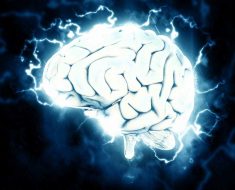
Many of the most promising investigations into novel cancer therapies focus on the cellular mechanisms at play in cancer formation and progression, and how they can be manipulated in a way that ultimately benefits the patient.
We have looked at several such studies over the past month, including one that examined how metastatic cancer cells can be both created and destroyed.
Metastasis occurs when cancer cells break away, traveling through the body and multiplying in new areas. This spreading of cells creates significant challenges for oncologists attempting to locate and destroy tumors.
The researchers behind the new study examined a natural process called autophagy, wherein damaged components of metastatic cancer cells are broken down and “recycled.”
The scientists tried turning off the activity of cellular structures called lysosomes that are implicated in autophagy. When they did so, they found that the cancerous cells were unable to survive the process of metastasis.
Acidity matters
A Spanish-American team that used a computer model to investigate how the metabolic pathways in cancer cells are affected by variations in their environment has recently identified another method for weaking cancer cells.
The study reports that cancer cells need an alkaline environment to function optimally and that they function less well in more acidic environments.
“This work is still very academic,” admits study co-author Miquel Duran-Frigola, “but we believe that some of the targets identified are ready to be tested in animals, thus allowing us to move into more advanced preclinical trial stages.”
Another recent study identified a cellular mechanism that the authors hope might contribute to a major change in cancer treatment.
This study investigated the role that Wnt proteins — proteins that control the proliferation of cells — play in cancer development.
Researchers already know that a process involving these proteins called Wnt singaling enables cells to divide, and that when this process goes wrong, it can cause malignant cells to divide, resulting in cancer.
The researchers found that protrusions on cells called cytonemes are involved in Wnt signaling, and that the process can be interrupted by preventing cytonemes from forming.
They believe that new therapies targeting the formation of cytonemes may then be effective against cancer.

Study author Anne Voss, from the Walter and Eliza Hall Institute in Parkville, Australia, explained how the compounds inhibit KAT6A and KAT6B, which are two proteins associated with certain cancers.
“Rather than causing potentially dangerous DNA damage,” she says, “as chemotherapy and radiotherapy do, this new class of anticancer drugs simply puts cancer cells into a permanent sleep.”
“This new class of compounds stops cancer cells dividing by switching off their ability to ‘trigger’ the start of the cell cycle. The technical term is cell senescence.”
“The cells are not dead, but they can no longer divide and proliferate. Without this ability, the cancer cells are effectively stopped in their tracks.”
Anne Voss
She continues, “There is still a lot of work to be done to get to a point where this drug class could be investigated in human cancer patients. However, our discovery suggests these drugs could be particularly effective as a type of consolidation therapy that delays or prevents relapse after initial treatment.”
What are Sprouty 1 and 2?
As well as finding ways to exploit weaknesses in cancer at a cellular level, some cancer studies we reported on this month have looked at how the body’s natural defense mechanisms might be primed to better fight cancer.
One study, for instance, found that immune cells are more effective at attacking cancerous cells if two delightfully named key molecules called Sprouty (Spry) 1 and Spry 2 are deleted.
Deleting the genes responsible for these molecules improved the survivability of CD8 T cells, which are a potent weapon of the immune system for dealing with viruses and bacteria.

The team identified a chemical compound that cut off the energy supply of malignant cells in mice with a highly aggressive type of brain cancer called glioblastoma.
Cancerous cells’ energy supply consists of tiny organelles called mitochondria. Scientists found that a compound called KHS101 prevented the mitochondria from turning nutrients into energy, effectively killing the glioblastoma cells.
Importantly, the researchers found that this approach was effective at treating the full range of genetic variations of glioblastoma cells.
“This is the first step in a long process, but our findings pave the way for drug developers to start investigating the uses of this chemical, and we hope that one day it will be helping to extend people’s lives in the clinic,” explain the authors.
Why are elephants less susceptible to cancer? It is a valid question. Elephants are less susceptible to cancer than us humans, and a new study suggests an explanation.
Scientists previously discovered that elephants each have at least 20 copies of a gene called p53 that suppresses tumors, compared with the sole copy of this gene that humans and most other animals carry.
In the new study, researchers found that p53 contains a “pseudogene” called leukemia inhibitory factor 6 (LIF6), which has the ability to “come back to life” and reactivate.
When it is reactivated, LIF6 ceases to be a pseudogene and starts to attack and kill damaged DNA. Similar to the previous study that we looked at, LIF6 does this by puncturing the membranes of the mitochondria of the affected cells, starving them of energy, and preventing them from potentially becoming cancerous.
The authors refer to LIF6 as a “zombie gene,” as this once-defunct gene’s origins in elephants seem to date back to 30 million years ago.
According to them, “This dead gene came back to life. This is beneficial because it acts in response to genetic mistakes, errors made when the DNA is being repaired. Getting rid of that cell can prevent a subsequent cancer.”
We hope that you found this summary of all our recent cancer studies illuminating and helpful. Stay tuned to the Cancer/Oncology news section of Medical News Today for reports on the latest in cancer research.
Source: Read Full Article





